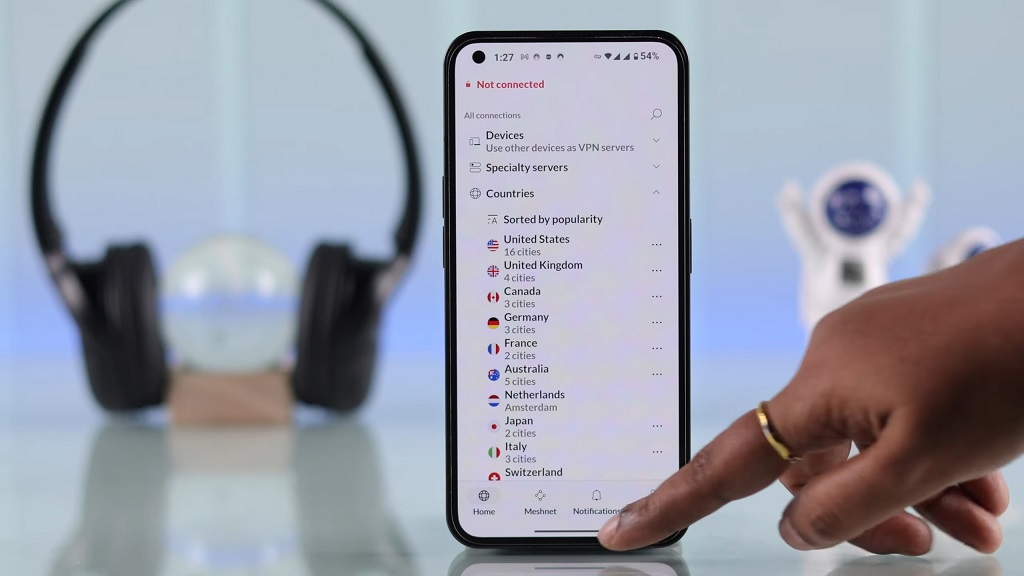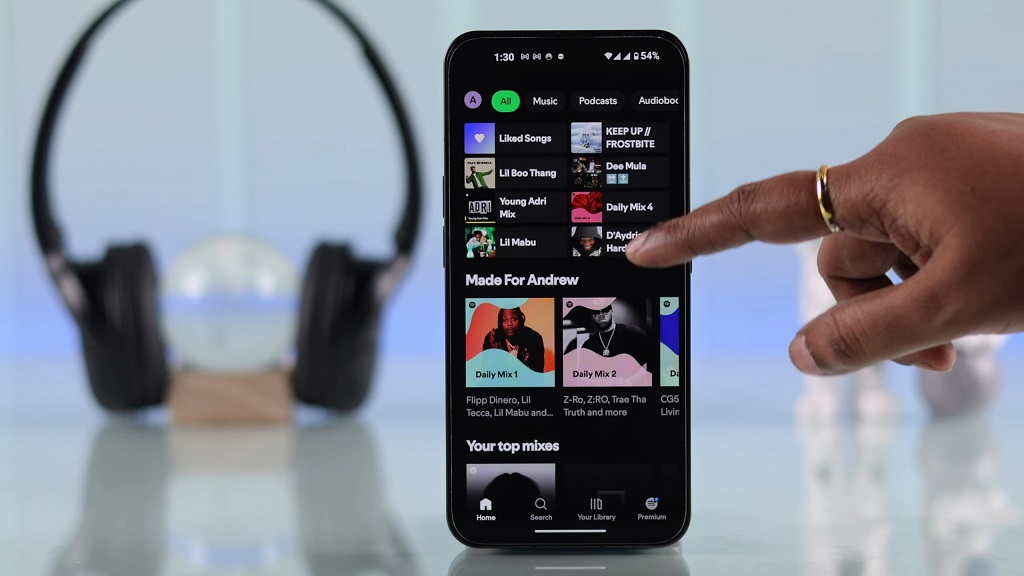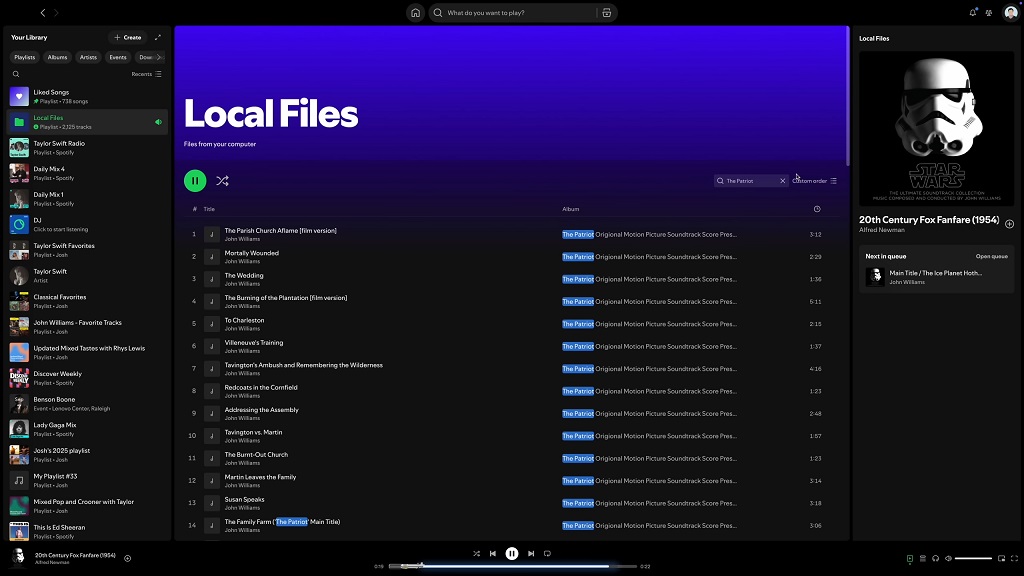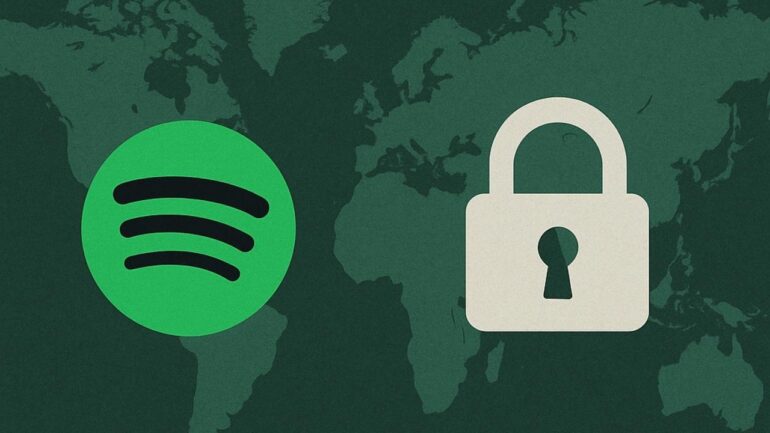If you have ever traveled abroad and opened your Spotify app only to find that some of your playlists look incomplete, you are not imagining things. Yes, Spotify does limit music availability by country, much like Netflix does with movies and TV shows.
The reason is not technical but legal: Spotify’s catalog is shaped by licensing agreements between record labels, publishers, and distributors that are negotiated on a country-by-country basis. According to Spotify’s own 2025 transparency data, the service now hosts over 100 million tracks globally, but no single user has access to all of them.
Instead, what you can stream depends on where your account is registered and what the rights holders allow in that region.
Why Spotify’s Catalog Differs by Country

Much like Netflix cannot stream a Hollywood blockbuster in every market due to regional licensing rights, Spotify faces the same challenge with music. Record labels often grant rights piecemeal, one deal for North America, another for Europe, sometimes even narrower by country.
For example, a Serbian music label might only license its catalog within the Balkans, while a U.S. indie label might sign agreements for North America and Western Europe but not Asia.
Spotify’s Terms of Use explain that your country of registration (linked to your payment method) determines your base catalog. If you travel, Spotify will detect your IP and allow you to stream abroad for up to 14 days before it requires you to either update your country or reconnect with your billing region.
This means that while you can take your playlists anywhere, the content available inside them can change depending on the country you’re streaming from.
The Scale of the Difference

While Spotify rarely publishes country-by-country track counts, industry trackers and independent analysts give us a sense of the variation.
According to IFPI (International Federation of the Phonographic Industry, 2024), the U.S. and Western Europe enjoy the largest licensed libraries, while smaller markets in Africa and parts of Asia often have reduced catalogs.
Here’s an illustrative table comparing approximate track availability and market size in 2025:
| Region / Country | Estimated Tracks Available (2025) | Notes |
| United States | ~100 million | Largest catalog, all major labels present |
| United Kingdom | ~98 million | Nearly identical to the S. catalog |
| Germany | ~95 million | Strong domestic + international mix |
| Serbia / Balkans | ~75–80 million | Smaller local licensing, gaps in some U.S. indie catalogs |
| India | ~70 million | Strong local Bollywood/Indian music, some Western gaps |
| Sub-Saharan Africa | ~60–65 million | Growing rapidly, but Western back catalogs are thinner |
This shows that while the core international hits (Taylor Swift, Drake, BTS, Ed Sheeran, etc.) are available nearly everywhere, the deep cuts, niche indie albums, older back catalogs, or regionally controlled music vary a lot.
Comparison With Netflix
It’s useful to put Spotify’s model side-by-side with Netflix, since both services are often described as “global” but with local gaps:
| Feature | Spotify | Netflix |
| Licensing Model | By track/album/artist, negotiated with labels & publishers | By film/series, negotiated with studios |
| Travel Flexibility | 14 days abroad before the catalog must match the billing country | Immediate catalog switch to the local country |
| Catalog Size (2025) | ~100M tracks total, regional availability varies 15–40% | ~6,000–7,000 titles worldwide, regional availability varies 40–70% |
| User Impact | Some songs are missing in playlists and albums, altogether ums The entire | Tire series or films are unavailable in certain countries |
In short, Spotify is more global than Netflix, because the overlap in music catalogs is higher, but still not universal. Netflix might have only 40% catalog overlap between the U.S. and Serbia, whereas Spotify’s overlap might be closer to 80–85%.
How Users Experience These Limits

For most casual listeners, the restrictions feel minor. Popular global hits are licensed everywhere, and Spotify invests heavily in making local music available in local markets. Where users notice the gaps is in playlists and back catalogs. For example:
- A playlist built in the U.S. may show grayed-out tracks when accessed in Serbia.
- Certain live albums, deluxe editions, or niche indie releases may not show up outside their licensed region.
- Local music (like Serbian folk or Indian classical) might not appear at all in Western accounts unless licensed globally.
According to Musically (2024 industry survey), about 8–10% of Spotify’s catalog is restricted regionally at any given time. For heavy music fans, that percentage feels significant.
Workarounds and Limitations
When it comes to getting around regional restrictions, Spotify is far less flexible than Netflix. With Netflix, using a VPN can instantly switch your catalog to another country.
On Spotify, however, simply connecting through a VPN rarely works. The catalog you see is tied not just to your IP address, but also to your billing country. If those two don’t align for long, Spotify’s automated systems flag the mismatch.
For that reason, VPNs might let you temporarily stream a track that isn’t licensed in your country, but they are not a reliable long-term solution. In fact, accounts that consistently try to bypass the rules risk being limited or suspended.
The only official way to change your available catalog is to update your account’s payment method and billing address to reflect the country where you actually live. This effectively migrates your account to that region’s library.
Many expatriates follow this process when they relocate, since it’s the only way to guarantee consistent access to the local catalog without running into technical or policy issues.
Streaming Across Borders and Connections
One often overlooked factor in how people experience Spotify’s regional limits is the type of internet connection they use. For example, travelers who rely on satellite internet, whether on a cruise ship, in rural areas, or while moving between countries, sometimes face unique challenges.
Because satellite providers often route traffic through central hubs in another country, Spotify may detect the connection as coming from a different region. That can temporarily unlock or restrict certain songs in your playlists.
This highlights how Spotify’s catalog rules are not just about licensing but also about how the platform interprets your location. Unlike Netflix, which immediately adjusts your library to match where you appear to be, Spotify tries to balance your account’s billing country with your current IP.
For someone on satellite internet, that means your catalog might look like it “jumps” between regions, a quirk that shows how technology and licensing collide in unexpected ways.
Bottom Line
Spotify does indeed limit music by country, but the scale of difference is smaller than Netflix’s regional video catalogs. According to Spotify’s 2025 transparency data, users worldwide have access to roughly 100 million tracks, but individual markets may see 15–40% less content due to licensing rules.
For global pop hits, the experience is nearly identical everywhere, but if you are into niche genres, back catalogs, or regionally controlled music, you will notice gaps when traveling or switching countries.
- Jennifer Tilly Then and Now – How Hollywood’s Most Unpredictable Star Kept Winning - November 12, 2025
- Seth Rogen Movies Ranked – The Performances That Turned a Comedian Into a Star - November 11, 2025
- How Eddie Van Halen Built the Frankenstrat and Changed Rock Forever - November 1, 2025



